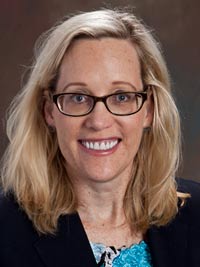
Kimberly Applegate, M.D. is a (now-former) professor of radiology and pediatrics at Emory University School of Medicine in Atlanta, and just one of many medical experts hoping to bring a new and brighter face to the medical radiology field so that more young professionals will consider one of its many branches for a career. Not only are the career opportunities diverse — ranging, for example, from radiologic technologist to medical physicist to safety officers to researchers, many are also in high demand, according to the Bureau of Labor Statistics.
The technology-oriented radiologic careers, for example, are projected to see growth in the nine percent range through 2028, whilst physician-level careers such as radiologist are projected to see a healthy seven percent growth over the same time period.
Is The Radiology Staffing Stream Running Dry?
“It’s a perfect storm of reasons why there aren’t enough people going into the radiation professions,” said Applegate. “It’s kind of like the stream of people who would naturally go into these areas have dried up.”
One of the reasons people may not be going into the field may be the fear of working around ionizing radiation. However, ionizing radiation is used in many fields, such as the energy industry as well as manufacturing, in addition to healthcare, according to the Environmental Protection Agency. However, people in radiologic technology careers receive specialized training to learn how to protect themselves, and others, from this radiation, and, in fact, how it is used to provide beneficial healthcare and technologies to patients.
Another reason is that the field is failing to attract women, particularly to those careers that require advanced training and education. In fact, women comprise many of the radiologic technology careers (roughly 75% of radiologic technologists are women), but tend not to pursue others that necessitate medical school or lengthier education.
An Opportunity For Women
“Many radiologic technologists are women,” said Applegate, who completed her M.D. in 1988 at George Washington University, followed by a Master’s of Science degree in Epidemiology and Biostatistics with Case Western Reserve University in 2001. “Why is that? There are a disproportionate number of white men, particularly in engineering, yet women of all backgrounds pursue radiologic technology degrees. What’s the difference? It’s education ascertainment and pay. These women could build on this foundation in many directions into the higher paying radiation professions.”
For example, the current radiation field is aging. In fact, this has been acknowledged by the National Council on Radiation Protection and Measurements, which states that among federal agencies, such as the National Institutes of Health and the Centers for Disease Control and Prevention, there is a general feeling that staffing is currently adequate, but that “the workforce [is] aging and would become an issue in a few years.”
The Mid-Career Gap in Radiology
Some of the biggest concerns about potential gaps relate to mid-career radiation professionals. While the radiologic technologist career is one of the entry-level positions available in the field, it does provide opportunities for advancement. A two-year education beyond high school is typically required, but does open up radiologic technologist (rad tech) graduates to a field with significant job growth that is faster than average for all occupations, according to the BLS.
Employees in this field may also be looking at higher than average wages compared to the national average. According to the BLS, the mean annual wage, as of 2014, for radiologic technologists was $57,510. This could potentially be a strong income for completing as little as a two-year degree, although time on the job, experience, and additional certification can also be factors. Pay like this alone could enable technologists to go back to school at a later date and pursue further education.
“They can go back and get a full bachelor’s or get extra training or certification to get higher pay in more complex imaging,” Applegate said.
Other career options in the radiologic field include those of nuclear engineering, which typically requires a bachelor’s degree, and radiation oncology or diagnostic radiology, which require a bachelor’s degree, medical school, and a further five to six years of post graduate training. Other options can include medical physics, radiologic biology and even radiation research, although graduate-level education is typically required for these fields. There are also the radiation professions of safety officer or administration to consider.
But unlike other careers in the medical profession, or even those in politics or the criminal justice system, medical radiology jobs lack the high visibility on TV that have helped make other careers popular.
“People don’t know about these jobs because they are not part of television or popular social media,” she said.
Women in Radiology: Making a Difference
So, to help promote radiation careers, the National Council for Radiation Protection has established an initiative to promote radiation professions among young people, particularly since a significant continued shortage is expected. Called ‘WARP’ for ‘Where Are the Radiation Professionals?’, students can learn more about it here.
One way of bringing a softer face to the field is by positively speaking to others about potential occupations, but also by supporting related websites, such as imagegently.org, launched by the Alliance for Radiation Safety in Pediatric Imaging. This website provides a variety of information to parents – interested in the safety of dental radiology, for example – as well as to medical professionals regarding events, training and relevant news.
Another part of the issue, according to Applegate, is that the infrastructure and research interest in the field and, in general, in the U.S. has bottomed out. “There has been a lack of investing in our country in infrastructure,” she said. “This is not the sexy stuff. It’s building the Internet, building the bridges and the roads and the dams and the investment in the future. Instead, we’re not doing that… What happens when there is a crisis? Our radiation professions are foundational for preparation, communication, and protection against such a crisis.”
And this is why she circles back to women for providing a solid foundation within radiologic technology careers and occupations. She sees them as the people who are most community-oriented and interested in thinking about the future, whether that’s means about caring for their own children or within their immediate or broader communities. On top of that, she said the field provides many opportunities for career movement. It’s not as if someone needs to stay in one area for their entire career — she is certainly someone who has refined her career as she has continued on.
“These jobs are not glamorous necessarily, but they’re really interesting,” she said. “You can make a difference. That’s the important thing.”
